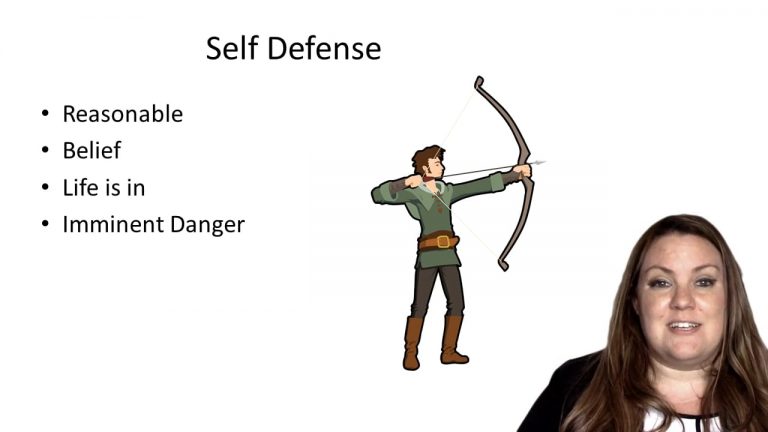SmartBrief
Confirm favorite deletion?
Criminal Law Keyed to Gershowitz
Commonwealth v. Cary
Citation:
271 Va. 87, 623 S.E.2d 906.Facts
The defendant and Beekman were involved in a tumultuous relationship for more than 15 years during which time Beekman fathered three of the defendant’s four children. They habitually argued violently regarding Beekman’s failure to provide child support for his children.
On May 23, 2002, the defendant purchased a handgun. She stated it was to protect herself and her children. In August 2002, defendant allegedly told Beekman’s sister that she had purchased the handgun and threatened to kill Beekman because he continued to fail to provide child support. The defendant allegedly made a similar statement to someone else as well the day before Beekman was killed. The defendant denied making these statements.
On the evening of September 6, 2002, Beekman went to defendant’s apartment. The defendant detected the odor of alcohol and knew from past experience that Beekman became violent when intoxicated. Post-mortem tests subsequently confirmed that Beekman had a highly-elevated blood alcohol level and also that he had recently used cocaine. The couple immediately began to argue over Beekman’s failure to provide defendant with child support, and Beekman called defendant vulgar names and attacked her, grabbing her by the hair and hitting her in the “face and sides.” Beekman refused to leave the apartment despite defendant’s request that he do so.
The defendant testified that when Beekman went to use the bathroom in the apartment, she decided to retrieve the handgun. When Beekman came out of the bathroom, defendant was sitting on a couch in the living room. Beekman again refused to leave the home and “was still verbally assaulting” defendant, threatening that he would “smack” her, “‘F’ [her] up,” and “break [her] up.” As Beekman “was getting ready to come into the living room,” defendant pointed the handgun at Beekman, and it discharged. The bullet struck Beekman in the chest. The defendant could not “remember doing anything [to make the handgun] go off” and “believed it was on safety” and unloaded. The defendant subsequently testified that she thought Beekman intended to resume his physical assault on her. Beekman died.
When police arrived following the shooting, defendant first claimed that an unknown assailant had shot Beekman outside the home and that Beekman had come to the home’s door “holding his chest and gasping for air.” The defendant repeated versions of this fabrication to the police several times that night. A few days later, defendant ultimately admitted to police that she had shot Beekman, but maintained that she had only intended to frighten him. She was convicted of first-degree murder. The trial court did not permit a self-defense instruction.
She appealed, and the Court of Appeals reversed. The Court of Appeals held that she was entitled to a self-defense instruction because the evidence supported a finding that the victim was advancing towards her in a threatening fashion.
Only StudyBuddy Pro offers the complete Case Brief Anatomy*
Access the most important case brief elements for optimal case understanding.
*Case Brief Anatomy includes: Brief Prologue, Complete Case Brief, Brief Epilogue
- The Brief Prologue provides necessary case brief introductory information and includes:
Topic:
Identifies the topic of law and where this case fits within your course outline.Parties:
Identifies the cast of characters involved in the case.Procedural Posture & History:
Shares the case history with how lower courts have ruled on the matter.Case Key Terms, Acts, Doctrines, etc.:
A case specific Legal Term Dictionary.Case Doctrines, Acts, Statutes, Amendments and Treatises:
Identifies and Defines Legal Authority used in this case.
- The Case Brief is the complete case summarized and authored in the traditional Law School I.R.A.C. format. The Pro case brief includes:
Brief Facts:
A Synopsis of the Facts of the case.Rule of Law:
Identifies the Legal Principle the Court used in deciding the case.Facts:
What are the factual circumstances that gave rise to the civil or criminal case? What is the relationship of the Parties that are involved in the case.Issue(s):
Lists the Questions of Law that are raised by the Facts of the case.Holding:
Shares the Court's answer to the legal questions raised in the issue.Concurring / Dissenting Opinions:
Includes valuable concurring or dissenting opinions and their key points.Reasoning and Analysis:
Identifies the chain of argument(s) which led the judges to rule as they did.
- The Brief Prologue closes the case brief with important forward-looking discussion and includes:
Policy:
Identifies the Policy if any that has been established by the case.Court Direction:
Shares where the Court went from here for this case.
Topic Resources
Topic Outline
Topic Refresher Course

 9m 57s
9m 57s